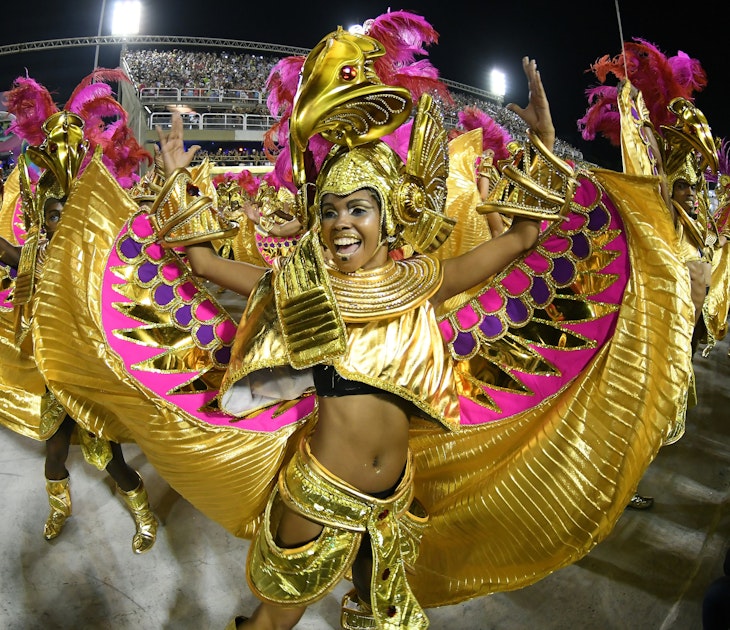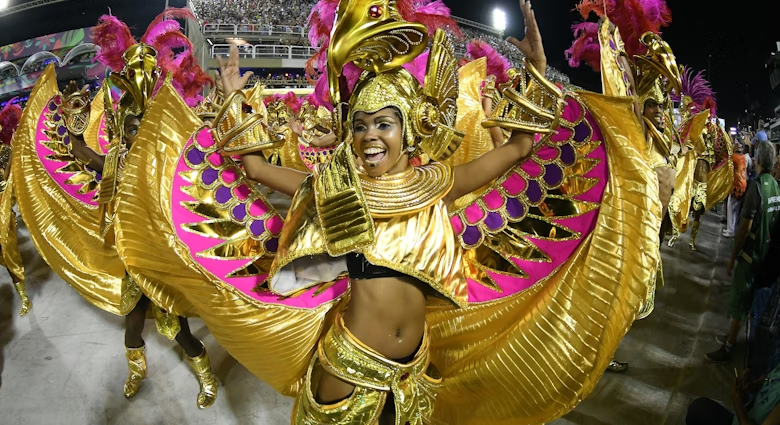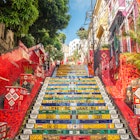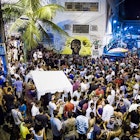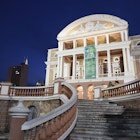Rio de Janeiro has embraced a serious lust for life with which the city’s inhabitants celebrate their days, making it a dynamic place to visit, no matter how you like to spend your time.
While large-scale festivities such as Carnaval make Rio famous, there are countless occasions for revelry: Saturdays at Ipanema Beach, festas (parties) in Lapa, football at Maracanã, and impromptu rodas de samba (samba circles) on the sidewalks of Leblon, Copacabana or any other corner of the city.
Planted between lush, forest-covered mountains and breathtaking beaches, Rio’s spectacular landscape is another of its virtues. Verdant peaks and golden sands fronting a deep blue sea offer a range of adventures: surfing great breaks, hiking through Floresta da Tijuca’s rainforest and rock climbing up the face of Pão de Açúcar (Sugarloaf Mountain). Here are the top things to do in Rio de Janeiro.
1. Join the jubilant crowds on Copacabana Beach
A magnificent confluence of land and sea, the long, scalloped beach of Copacabana extends for some 4km (2.5 miles), with a flurry of activity along its length: over-amped soccer players singing their team's anthem; Cariocas (Rio residents) and tourists lining up for caipirinhas (cocktails made from limes, sugar, ice and high-proof sugarcane alcohol) at kiosks; kids showing off their soccer skills; and beach vendors shouting out their wares among the tanned beach bodies.
Local Tip: The sea here is usually fine for a plunge, though it’s best to check the water quality via the INEA website (in Portuguese) before you visit, especially following heavy rainfall, as the water is sometimes contaminated with sewage. Scan the page for Copacabana – or whichever local beach you’re visiting – and if it’s green go for it. If it’s red, kick back on the sand and get the caipirinhas in.
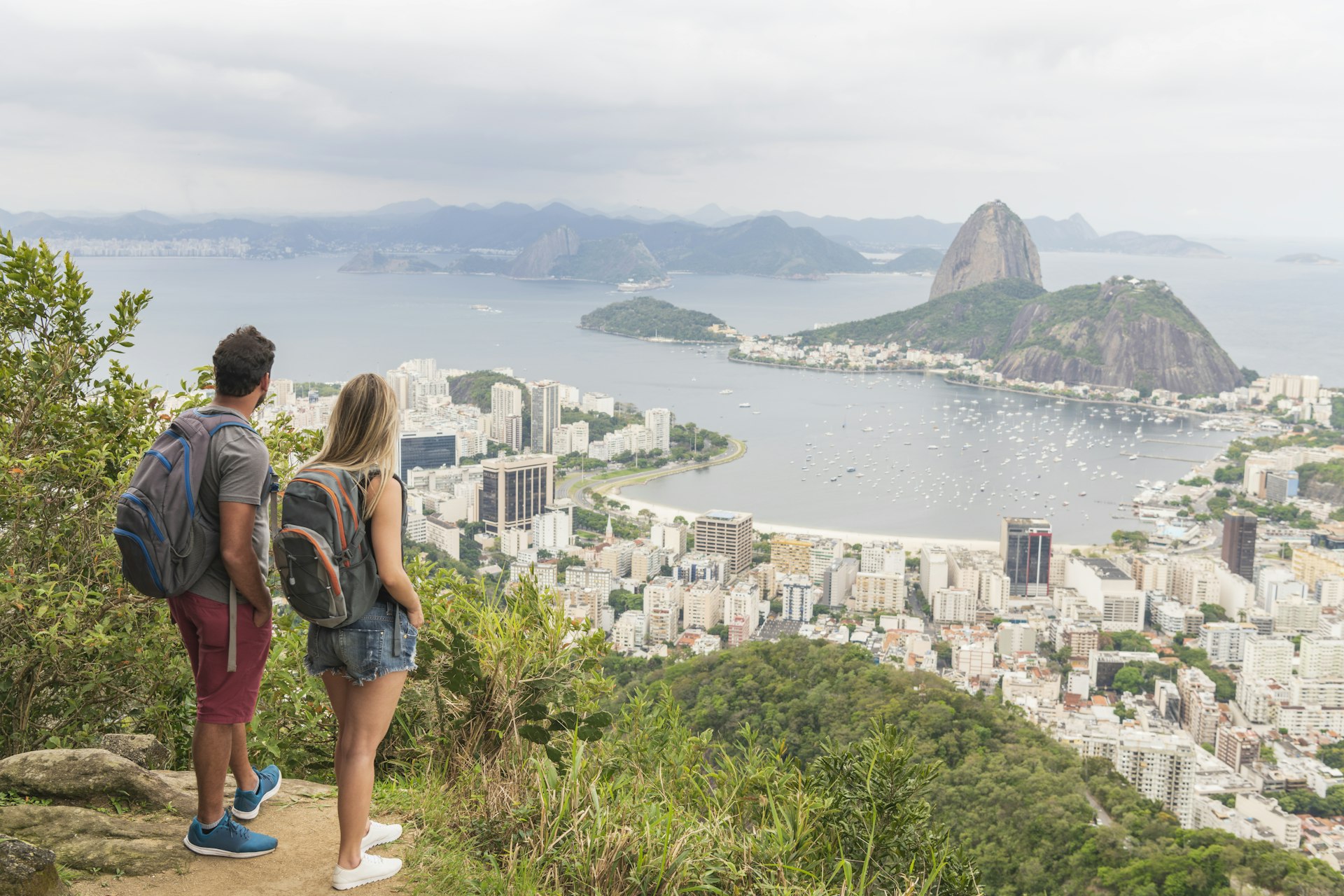
2. Take in the views from Sugarloaf Mountain (Pão de Açúcar)
Seen from the peak of Sugarloaf Mountain (Pão de Açúcar), Rio is undoubtedly a Cidade Maravilhosa (Marvelous City). There are many good times to make the ascent, but sunset on a clear day is the most rewarding.
Two cable cars connect to the summit, 395m (1296ft) above Rio. At the top, the city unfolds beneath you, with Corcovado mountain and Cristo Redentor (Christ the Redeemer) off to the west and Copacabana Beach to the south.
Planning tip: Sugarloaf’s views draw big crowds. Forgo the sunset slot and arrive just after 8am for far fewer people.

3. Experience vibrant subcultures on Ipanema Beach
One long stretch of sun-drenched sand, Ipanema Beach is demarcated by postos (posts), which mark off subcultures as diverse as the city itself.
Posto 9, right off Rua Vinícius de Moraes, is where Rio’s most lithe and tanned bodies migrate. The area is also known as Cemetério dos Elefantes because of the handful of old leftists, hippies and artists who sometimes hang out there. In front of Rua Farme de Amoedo is Praia Farme, the stomping ground for gay society.
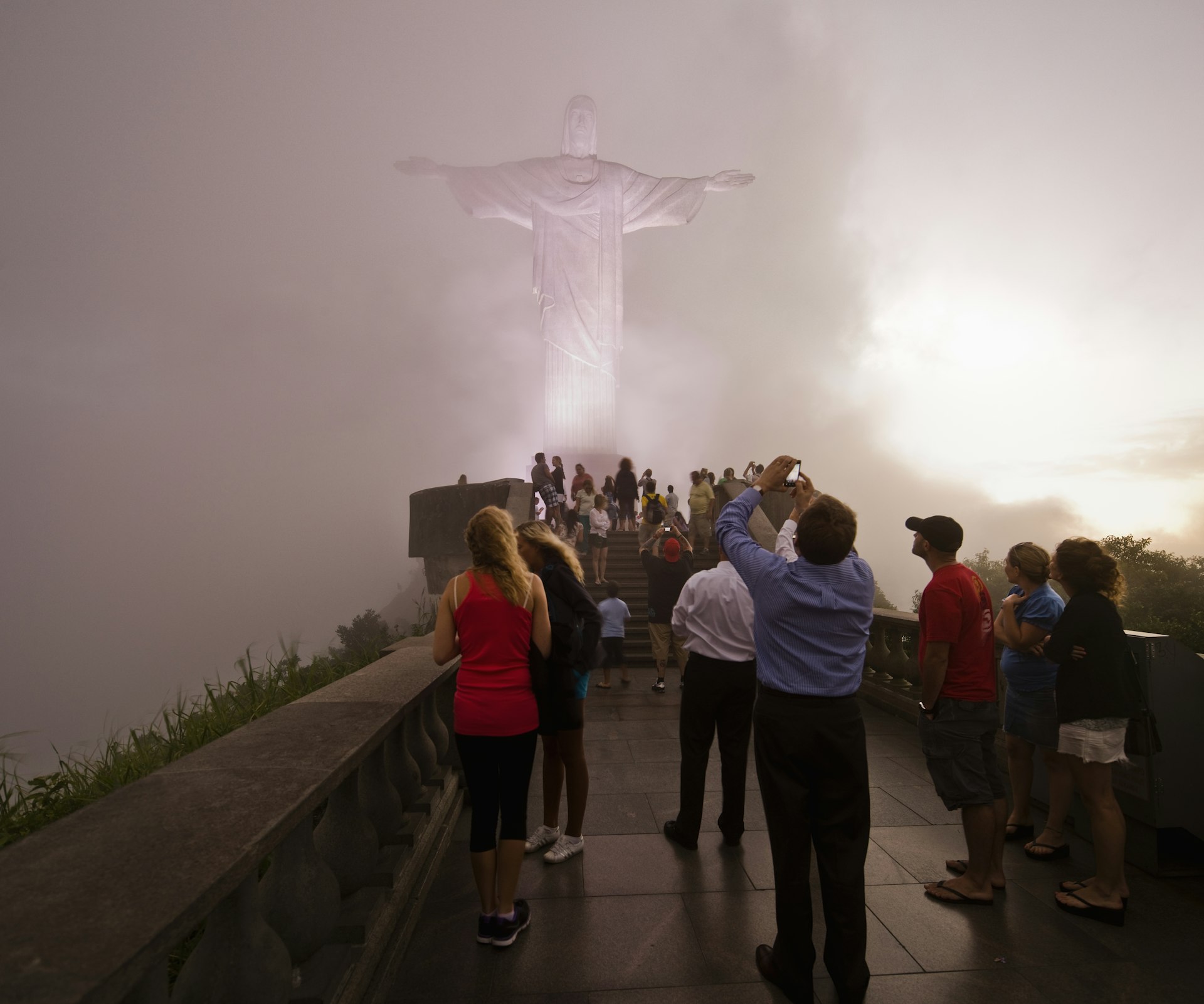
4. Get up close to Christ the Redeemer (Cristo Redentor)
Standing atop Corcovado (which means "hunchback") at 38m (125ft) tall, the open-armed Cristo Redentor gazes out over Rio, a placid expression on his well-crafted face. The mountain rises straight up from the city to 710m (2329ft), and at night the brightly lit statue – all 1145 tons of him – is visible from nearly every part of the city.
Corcovado lies within the Parque Nacional da Tijuca. The most popular way to reach the statue is to take the red narrow-gauge train, which departs every 30 minutes and takes approximately 20 minutes to reach the top. Note that same-day tickets are not available from the cog train station.
Buy tickets online (the website lists numerous places to buy under "Selling Points") or from an authorized seller around Rio; you must select a date and time when purchasing.
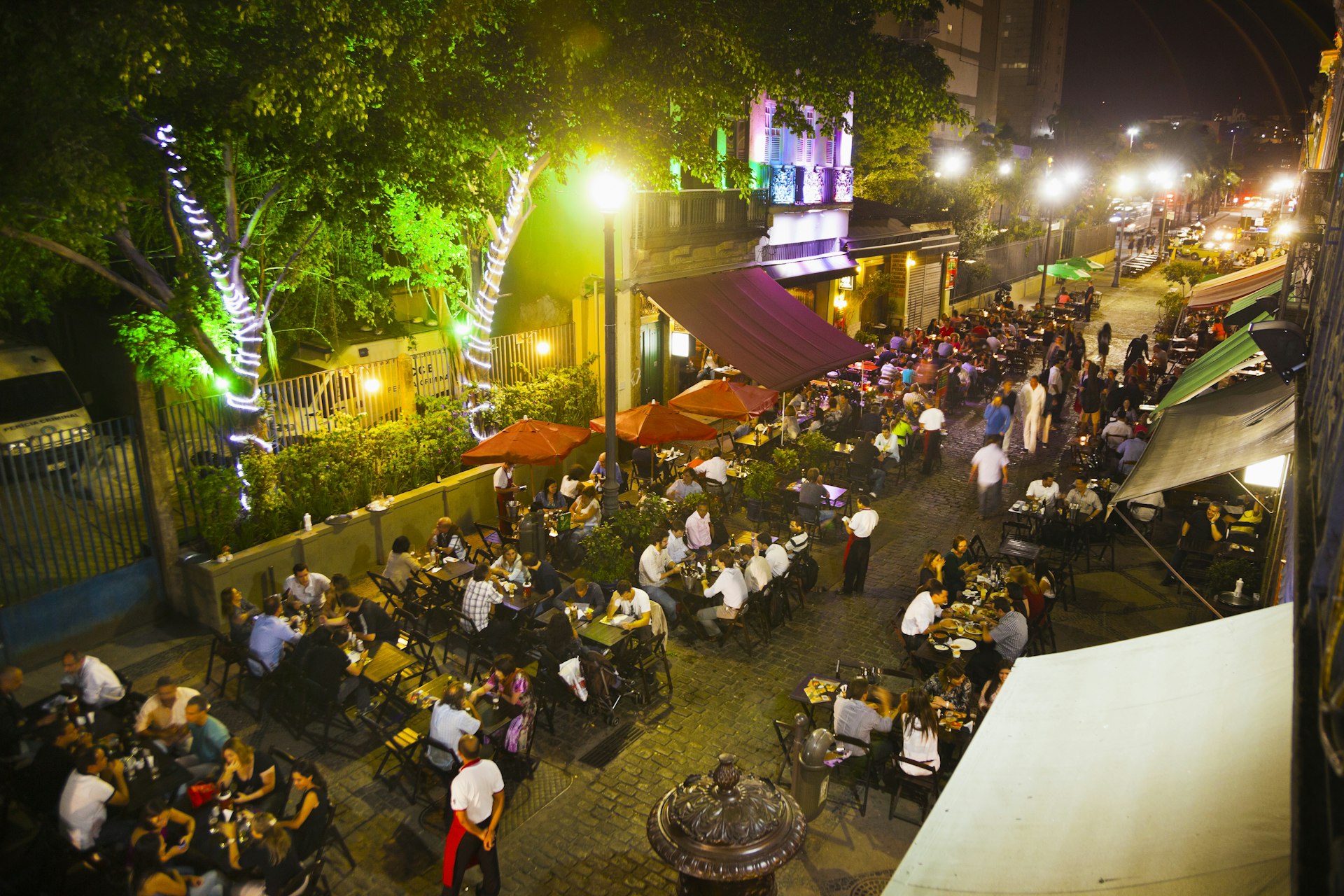
5. Enjoy vibrant nightlife in Lapa
This former red-light district is the center of a vibrant night scene in Rio, with dozens of music clubs, bars and old-fashioned restaurants scattered along its avenues. Fun, yes, but pickpocketing is currently an issue and muggings have increased. It’s wise to go in a group and stay where the crowds are.
A popular female-owned hangout is Cozinha da Lapa. For a brief switch from Brazilian food, the Peruvian restaurants Sabor Peruano and Panka here are both reliably delicious and reasonably priced.
Local tip: For a lively low-key evening among a largely homegrown crowd, catch one of the music nights at the organic produce shop and cafe run by the Landless Workers Movement (MST), Armazém Do Campo.
6. Soak up the bohemian vibes of Santa Teresa
Set on a hill overlooking the city, with cobbled streets and aging mansions, Santa Teresa retains the charm of days past and is Rio’s most atmospheric neighborhood.
Currently the residence of a new generation of artists and bohemians, this village-like neighborhood has colorful restaurants and bars and a lively weekend scene around Largo do Guimarães and Largo das Neves. Catch the bonde (cable car) up to soak it all in.
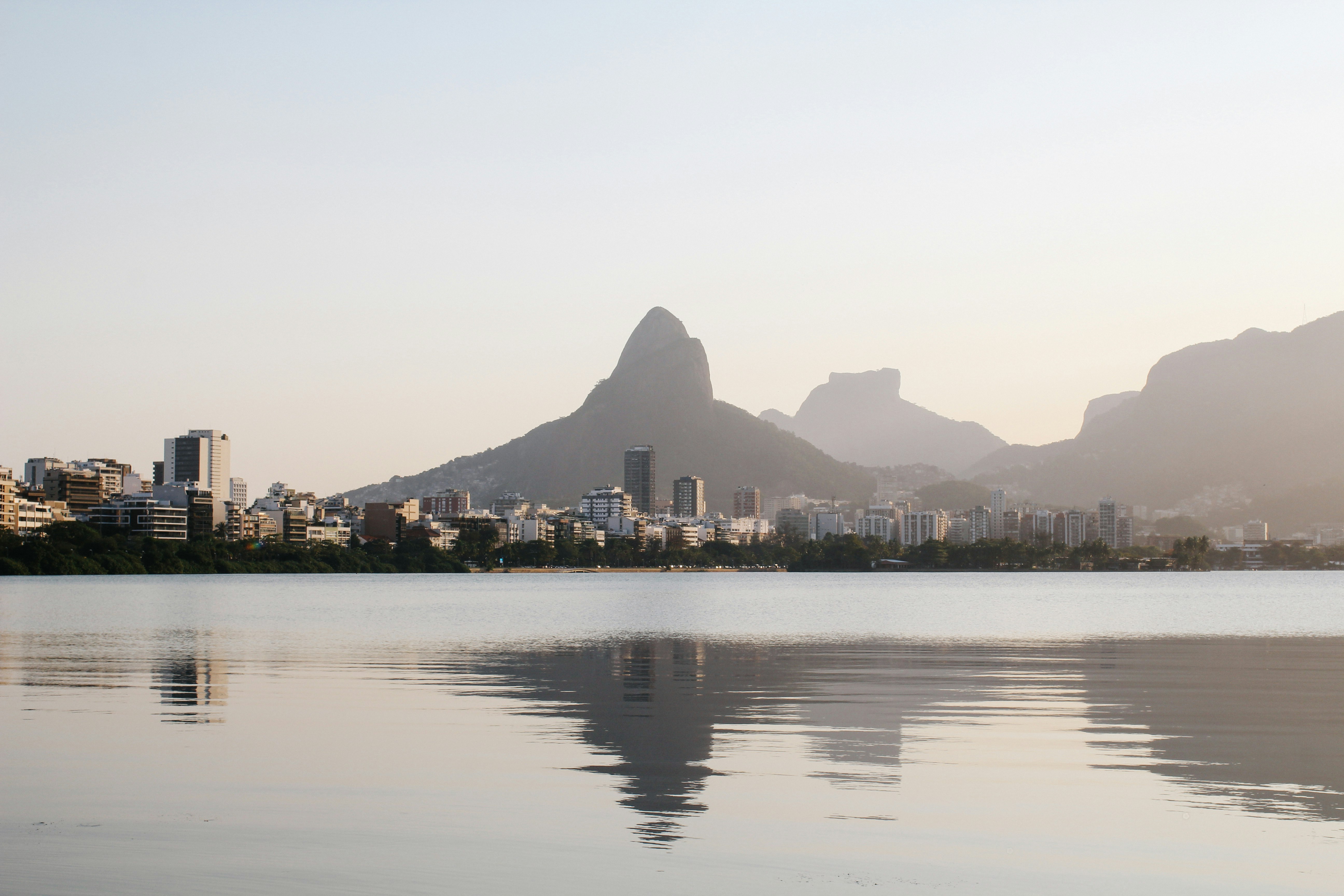
7. Take a breath at Lagoa Rodrigo de Freitas
One of the city’s most picturesque spots, Lagoa Rodrigo de Freitas is encircled by a 7.2km (4.5-mile) walking and cycling path. Bikes are available for hire from stands along the east side of the lake, as are paddle boats.
For those who prefer caipirinhas to plastic swan boats, the kiosks on either side of the lake offer alfresco food and drinks, sometimes accompanied by live music on warm nights.
8. Roar from the stands at Maracanã Football Stadium
Rio’s Maracanã stadium is hallowed ground among soccer lovers. The massive arena has been the site of legendary victories and crushing defeats for the national team, playing a starring role in the 2014 World Cup when it hosted major games, including the final between Germany and Argentina.
The stadium also staged the opening and closing ceremonies of the 2016 Summer Olympics. No matter who takes the field, the 78,800-seater comes to life in spectacular fashion on game days.
Planning tip: When local teams are playing, expect a full-throttle raucous crowd. Immerse yourself in surging emotions with a seat in the North or South areas; head to the West for a calmer spectating experience.


